Varkala is a coastal city located in Kerala, India. Like other cities, Varkala has its own unique Arabian Sea alongside its golden beaches and tall cliffs. In Varkala, you’re able to surf, swim, or even just enjoy the scenic view offered from the height of the cliffs.
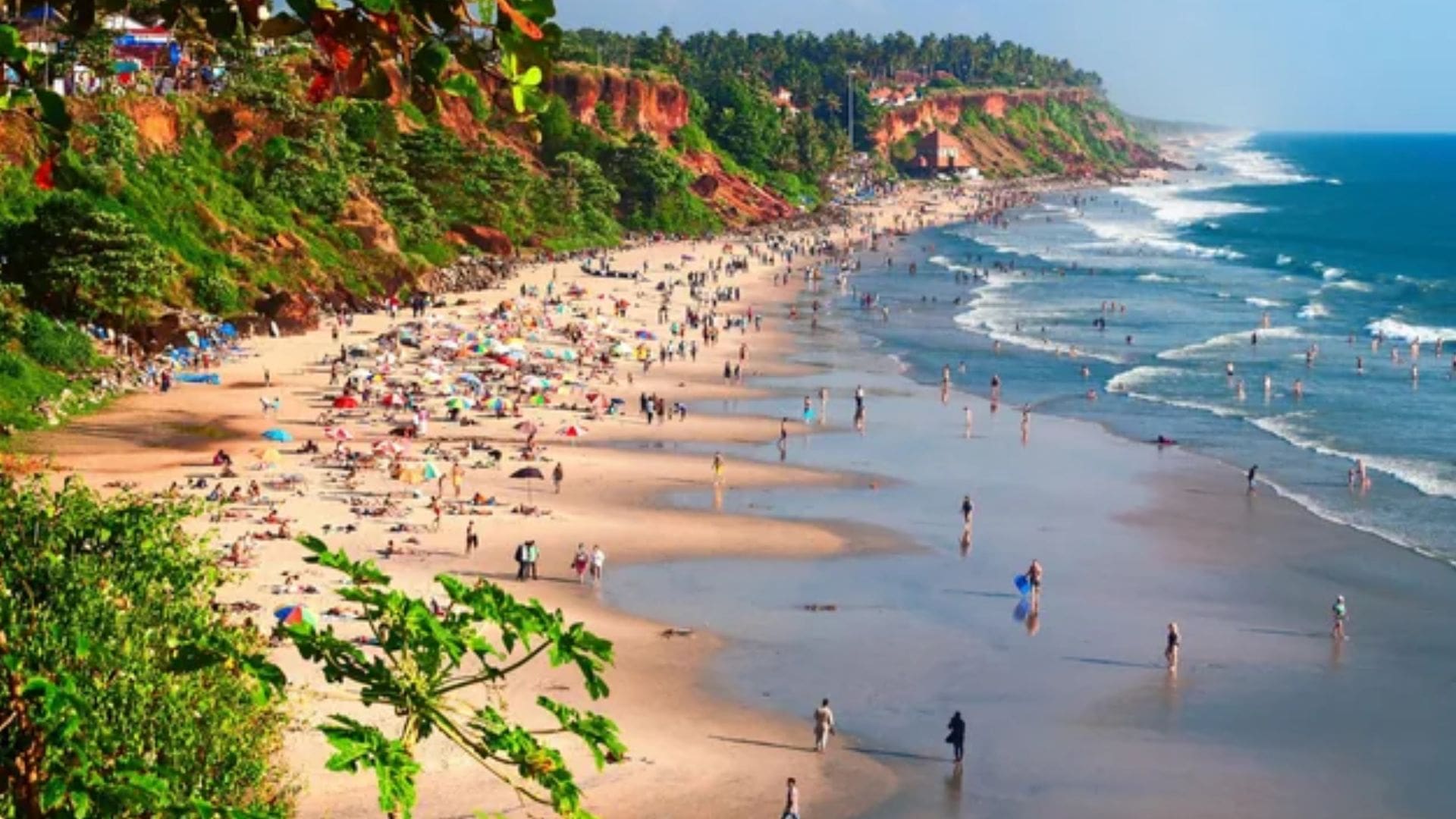
But when is the best time to visit Varkala? It is important to point out that Varkala experiences a tropical climate that goes through different seasons, each offering a unique experience. From sunny beach days to monsoon serenity, every season brings something new and different when compared to the other. True to its name, this guide will assist you in choosing the best time to visit Varkala, based on your travel preferences and the kind of experience you’re looking for.
Not Interested in Varkala? Here are the coldest places to visit in South India
Understanding Varkala’s Climate
As a town in coastal Kerala, Varkala has its own set of weather conditions, which include hot summers, mild winters, and rainy monsoons. Expect a temperature range of 20-35 degrees Celsius and a constant level of humidity.

Varkala does experience some fluctuations in terms of rain and humidity, which can alter the overall experience. The three main seasons over there include Summer, which stretches from March to May, the monsoon period from June to September, and winter from October to February.
Depending on whether you are looking forward to a budget-friendly trip, an adventure, or some time at the beach, all three seasons come with their own sets of advantages and disadvantages.
ALSO SEE-Varkala to Munnar by Bus, Train, Taxi
What Makes Winter in Varkala Special
According to numerous votes, winter remains the most preferred period for travel from October to February. Why? Comfortable weather, clear skies, and calm seas all make for great swimming conditions.
However, it’s not wise to disregard the other seasons. Monsoon offers lush greenery along with lesser crowds, while summer provides some fantastic deals, provided you can brave the temperatures. Let us take a look at what each season has to offer.
Winter (October to February): The Peak Season
If you ask for a recommendation, either from a travel guide or the locals, winter remains the most ideal time to travel to Varkala. Daytime summer weather revolves around anywhere from 20 to 30 degrees Celsius along with a nice breeze.
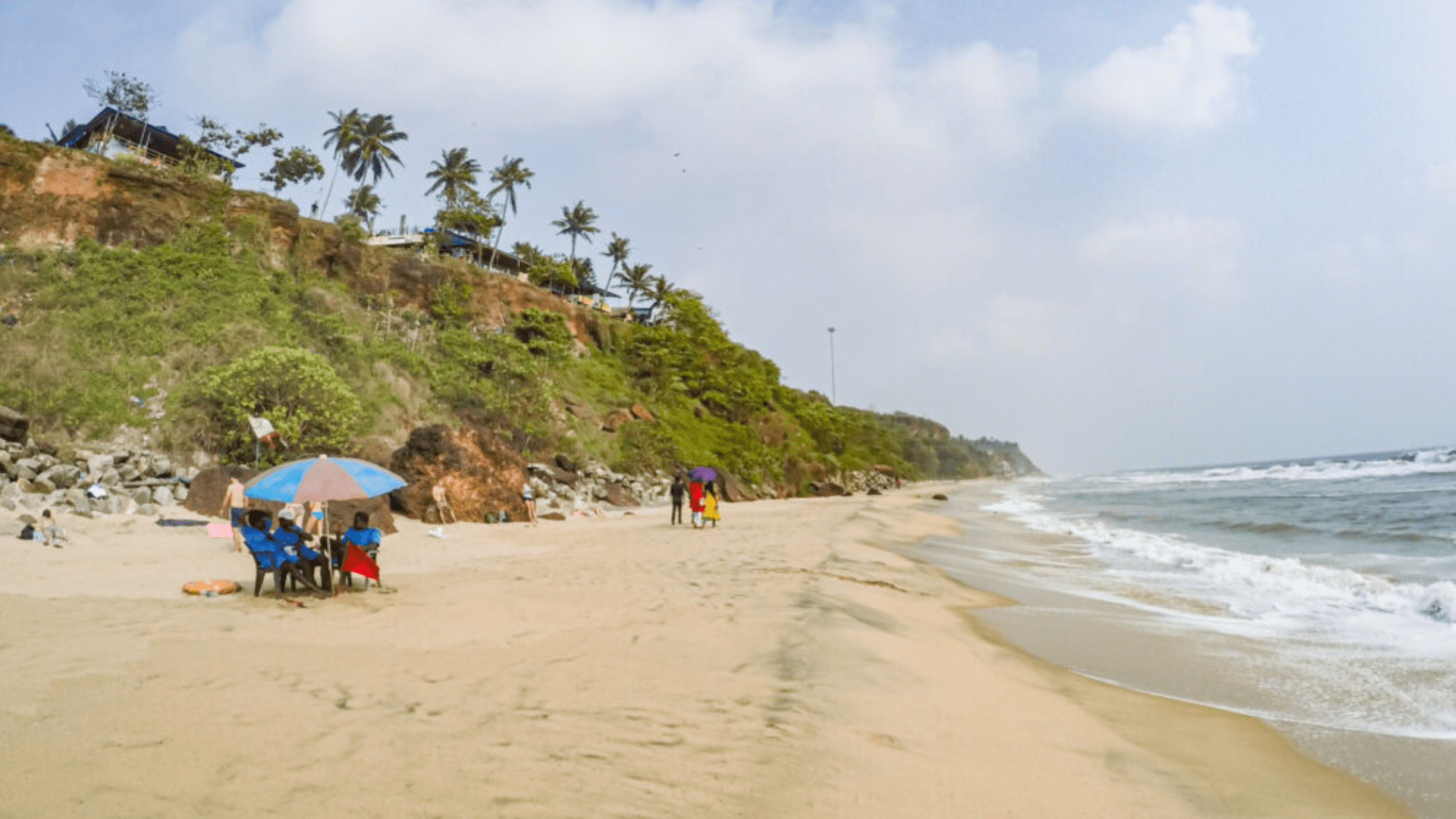
The humidity brings the temperature down a notch during this time, dramatically lowering the amount of stickiness faced when spending long hours outdoors. This is also one of the best times as the sea turns into a swimmer’s paradise, offering calm waves and crystal clear water which is perfect for swimming and surf lessons.
ALSO SEE–Beaches Near Munnar-The Complete List
What Happens in Winter
Varkala buzzes in winter with tourists and locals flocking to coffee shops or souvenir shops that line the cliffs on the North Cliff and South Cliff. On the main stretch, Papanasam Beach, it is not uncommon to meet people sunbathing, playing volleyball, or attempting to paraglide off the cliffs.
With the clear skies, there is a wide availability for stunning views during sunset, especially from spots such as Varkala Cliff, where the horizon is set aglow in breathtaking oranges and pinks.
Festivals and Activities in Winter
Festivals add to the mix. In December or January, you might catch the Janardhana Swami Temple’s annual festival, with processions and music honoring Lord Vishnu. It’s a 2000-year-old temple, so there’s history to soak in, too. Christmas and New Year bring extra energy, with beachside parties and fireworks. If you’re into yoga or Ayurveda, winter’s perfect—many retreats run full schedules this time of year.
The Downsides of Peak Season
There is one negative though; peak season means an increase in visitors. Popular beaches such as Kappil Beach or Black Beach are a specialty and get very congested, making it harder to relax. Homestays and hotels tend to increase their prices during this peak season vignette as well.
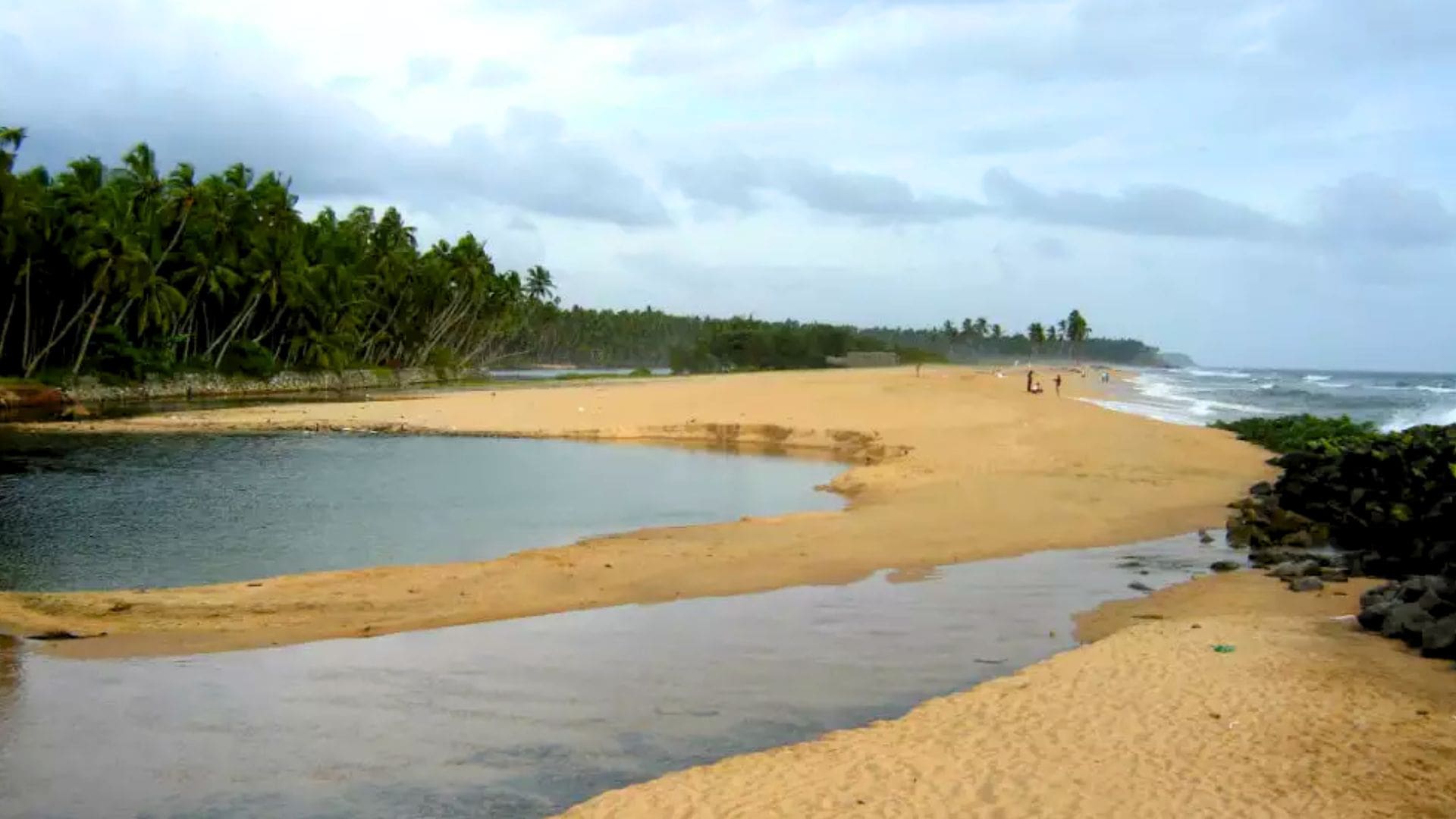
Booking in advance, around two months ahead, aids in getting better deals. If you want to have an experience with classic Varkala, which includes pleasant water sports weather, panoramic beaches, and seamless flows of sunshine, now is your opportunity.
ALSO SEE-Kerala In May- Weather, Places To See, Festivals, Tips
Why Winter Works
- Comfortable temperatures (20°C–30°C)
- Calm seas for swimming and surfing
- Clear skies for sightseeing and photography
- Festivals and events
Things to Watch in Winter
- Higher costs for stays and transport
- Crowded beaches and cliffs
Monsoon (June to September): The Quiet Charm
Monsoon flips the script. Varkala can receive rainfall exceeding 200 to 300 mm a month from the months of June to September. The ever-persistent 25 to 30 degree temperature range remains constant.
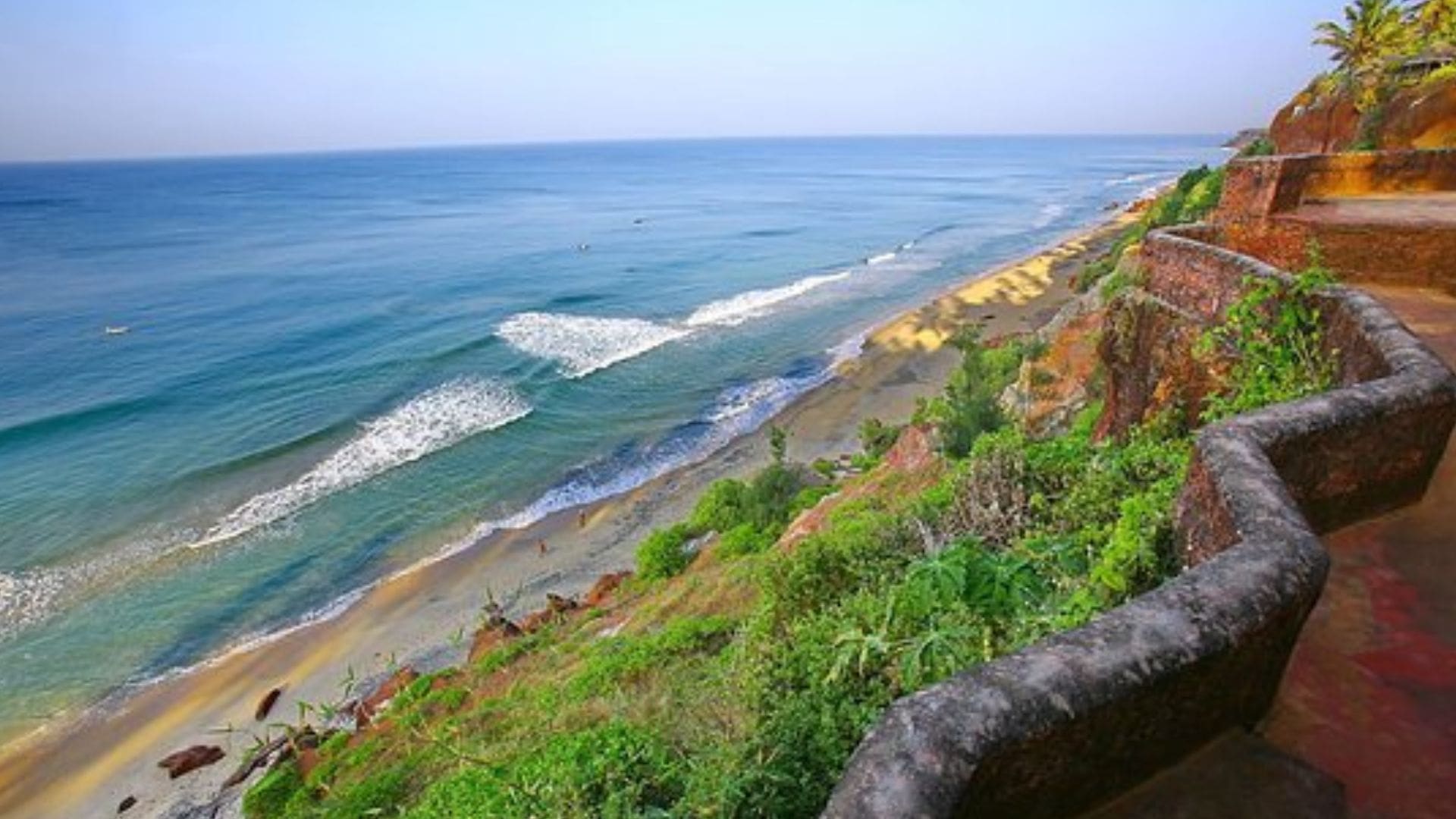
However, the mist does enhance while itffielded alongside an increase of tosueair. The waters become turbulent, with growing waves thrashing against the cliffs. Due to safety concerns, swimming and most other water sports become unfeasible.
Why Monsoon Still Draws Visitors
Why even visit in the first place? Well, for starters, the crowds completely clear out. Varkala transforms into a whole different country as it becomes peaceful, tranquil, and full of ethereal greenery.
Stormy seas paired with the mystic cliffs provide a dramatic view while the photogs rave for it. If the weather feels cooperative, they will get amazing misty photographs. With rain washing out the cliffs alongside turning it into a vibrant jungle and the backwaters around Kappil Lake, it makes for the ideal ride.
Budget Benefits of Monsoon
Stays get cheaper, too. Guesthouses drop rates to attract visitors; as such, you may grab a cliffside room for half its winter price. While some beach shacks close up, cafes remain open.
Other places of interés include Varkala’s Cultural Center, where Kathakali dance shows are held every evening during season, and the magnificent Anjengo Fort, a 17th century fort with a lighthouse that is also found nearby.
Challenges of the Rainy Season
The cons? Rain can cancel set plans. The roads become muddy, and any outdoor activities like trekking or paragliding become dangerous. July is the wettest month, so September or July may be better options for less rain.
Don’t forget to pack a rain poncho along with waterproof footwear; flip flops are not enough. For those who appreciate harsh elements of nature and don’t mind rainy days, monsoons showcase Varkala in a quieter, moody light.
Why Monsoon Works
- Lush greenery and dramatic scenery
- Fewer tourists, more space
- Lower accommodation costs
- Unique vibe with rain and waves
Things to Watch in Monsoon
- Heavy rain limits outdoor fun
- Rough seas—no swimming or sports
- Some places close temporarily
Summer (March to May): The Hot Deal
The hottest season from March to May is summer in Varkala, when temperatures range from 28 degrees celsius to 35 degrees and, on rare occasions, even 40 degrees celsius. Along with the sun, the sea also remains warm, though it becomes choppy at times. This is not the land of postcard beaches as they thin out during the summers, leaving the cliffs devoid of visitors.
Why Summer Appeals to Some
That said, summer has its lovers. This is when you save money. Hotels drop their prices when demand falls, and flights or trains to the nearby Trivandrum (which is 50 km away) become affordable.
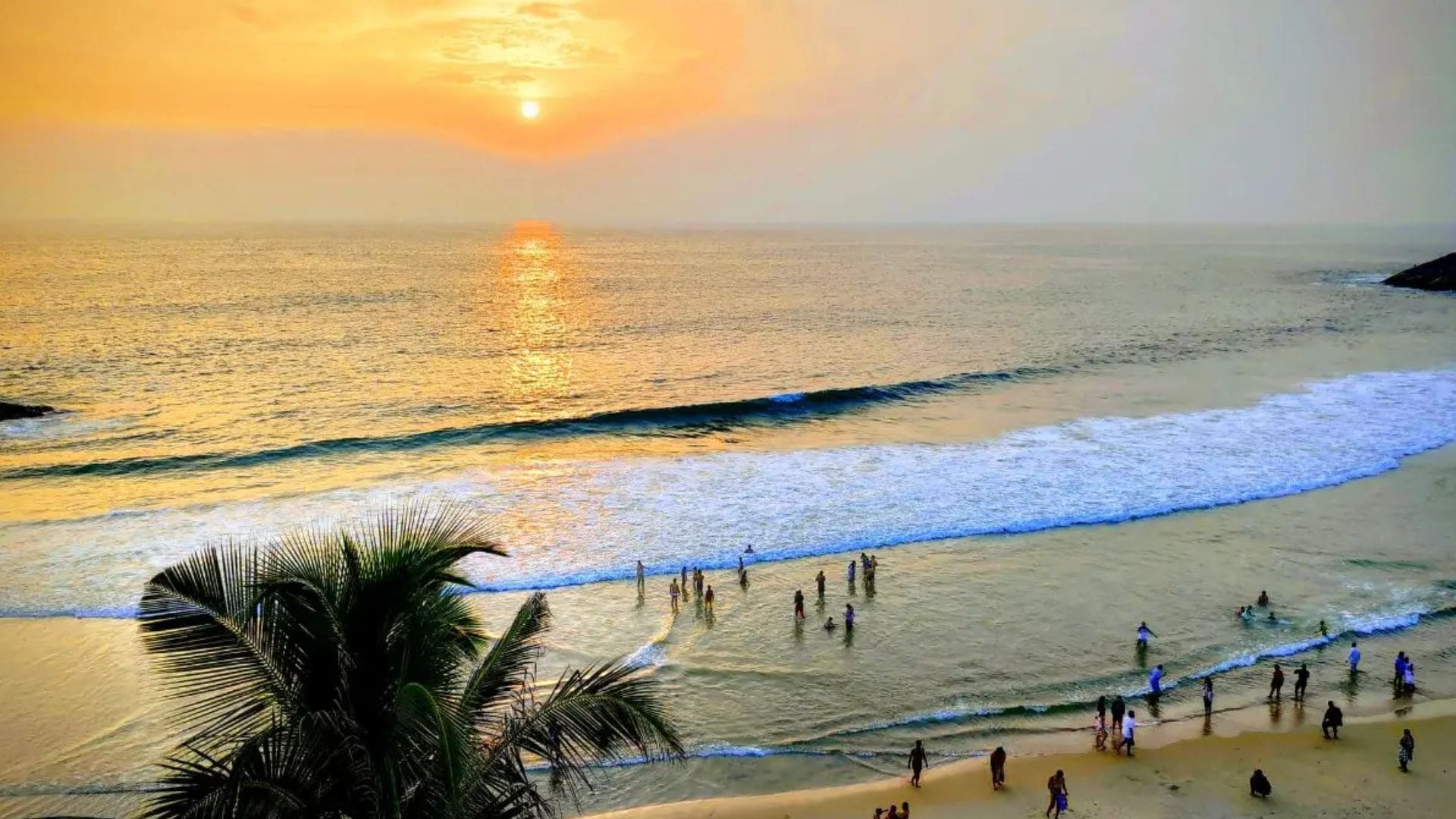
The heat is bearable if you only go out in the early morning or late afternoon, which is also an excellent time for a sunrise dip in Odayam Beach or a stroll to Sivagiri Mutt, a serene pilgrimage place in the evening.
ALSO SEE- Top 5 Tourist Places In Kerala-Pictures, Tips and Attractions
Summer Events and Options
Festivals also emerge. In March or April, the local population is drawn to the temple with the 10-day long Arattu Festival at Janardhana Swami Temple, which flourished with its rituals and celebrations. For water sports lovers, jet skiing or parasailing can still be done, although the heat will drain your energy quickly. Make sure to stick to shaded cafes or Indoor Ayurvedic spas during peak lunch hours.
Coping with Summer Heat
The day extends outside quite a lot, and humidity is stifling, and it will quickly wear you out. Make sure to bring light clothing, a hat, and sunscreen since staying hydrated is incredibly important. Summer is the best for those who don’t mind intense heat mixed with less-than-ideal weather.
Why Summer Works
- Budget-friendly stays and travel
- Less crowded beaches
- Cultural events like Arattu
- Warm sea for early dips
Things to Watch in Summer
- High heat and humidity
- Limited outdoor time
- Fewer tourists, less vibe
Shoulder Seasons: October and March
Sandwiched between the seasons, October and March serve as Varkala’s shoulder months. The secondary awkward period of the year combines the advantages of both worlds—pleasant weather, fewer visitors, and affordable prices. The monsoons come to a gentle end in October, leaving the cooling cliffs green and with a refreshing breeze. The temperatures during this time are between 24°C and 30°C, and the sea becomes calmer. It is a perfect period before the winter rush.
What March Offers
Slightly warm weather peaks towards the end of the month and remains until the start of summer, making it easy to consider March as a transitional month. During this time, the temperature rises a little, approximately 28°C–33°C, but spring mornings are quite gentle. Rain becomes infrequent, and the shallow crowd returns as the peak season approaches. All of the reasons above make the month ideal for enjoying Varkala’s cliffs, beaches, and temples without the hassle and price that the winter rush brings.
Why Shoulder Seasons Work
- Balanced weather (not too hot or wet)
- Fewer people than winter
- Better rates than peak season
- Full access to attractions
What to Do in Varkala Season by Season
The attractions of Varkala change with the seasons. Here is a brief overview:
- Winter: Surf Papanasam Beach, paraglide from the cliffs, do temple visits, and go on hikes to Edava Beach. The nightlife also improves, with beach dinners at Cafe del Mar.

Surfing at Papanasam Beach, Varkala – Experience thrilling waves and stunning coastal views at one of Kerala’s most scenic beaches - Monsoon: Sip tea at the cliff cafes while watching the rain and boating at Kappil Lake. Indoors, yoga or Ayurvedic massages fit the mood.
- Summer: The summer season is best to catch the sunrise at the less crowded beaches, like Thiruvambadi, and visit Sivagiri Mutt. The Arattu festival also falls in the summer season. If the sea is calm, one can partake in water sports.
- Air Travel: Head to Trivandrum International Airport, which is 50km away and can be traveled to by taxi, which costs ₹700-₹1000, or train, which costs ₹50-₹100. Trivandrum is also accessible by bus, costing around 90Rs.

Aerial view of Trivandrum International Airport, showcasing its modern terminals, runways, and proximity to Kerala’s capital city, Thiruvananthapuram - Accommodation: Budget accommodations start from ₹1000 per night, while resorts start from ₹4000 during the peak season.
- Packing: For the monsoon season, a raincoat is required, along with light clothes and sunscreen. For winter nights, a jacket is required.
- Timing: 3 to 4 days is sufficient to cover the essential cliffs, beaches, and temples. Munroe Island is a short distance away at a distance of 70km and is best if planned for a day trip.
When’s Your Peak?
Varkala’s paradise status doesn’t fade—it just changes flavor. Winter (October–February) is the clear winner for most: great weather, full activity lineup, and that classic beach-town energy. But the monsoon season (June–September) offers a serene escape with green vistas, and summer (March–May) suits bargain hunters who can take the heat. Shoulder months like October or March strike a middle ground.
Best Time to Visit Varkala: Finding Your Perfect Time
Think about what you want—sunny beaches, quiet retreats, or cheap deals. Varkala delivers year-round; you just need to pick your moment. So, when will you see this coastal gem at its peak?

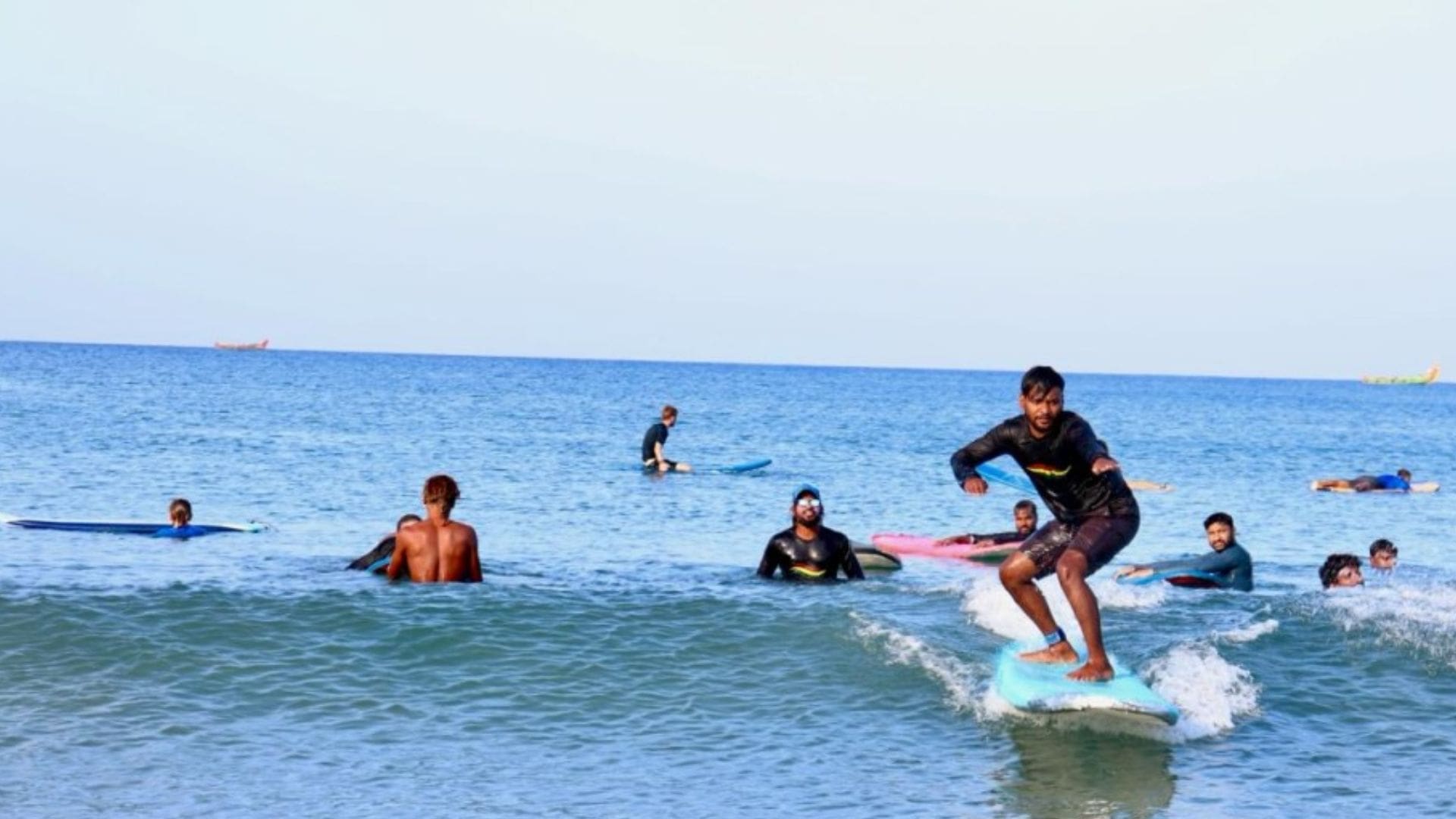
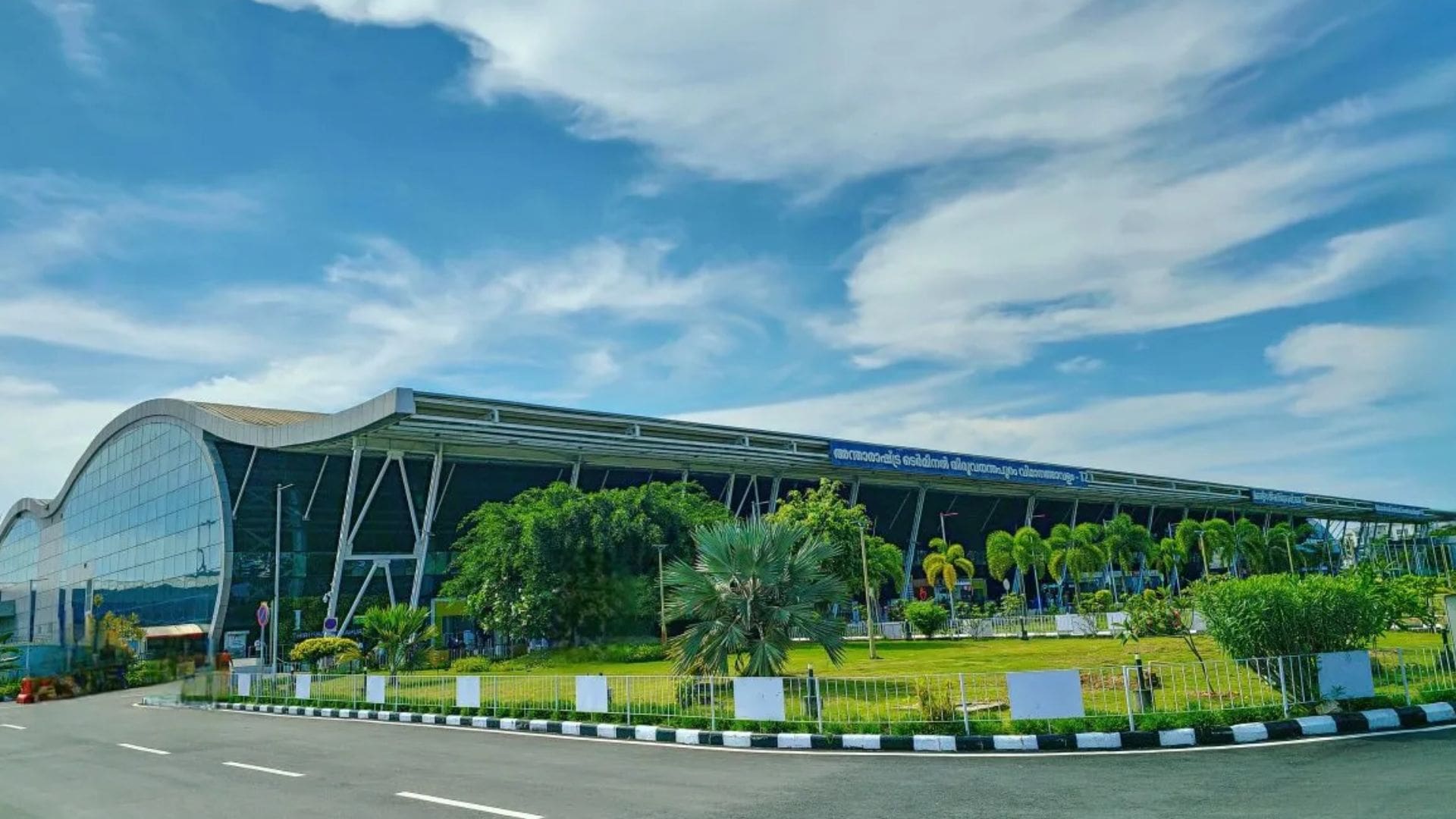
Leave a Reply